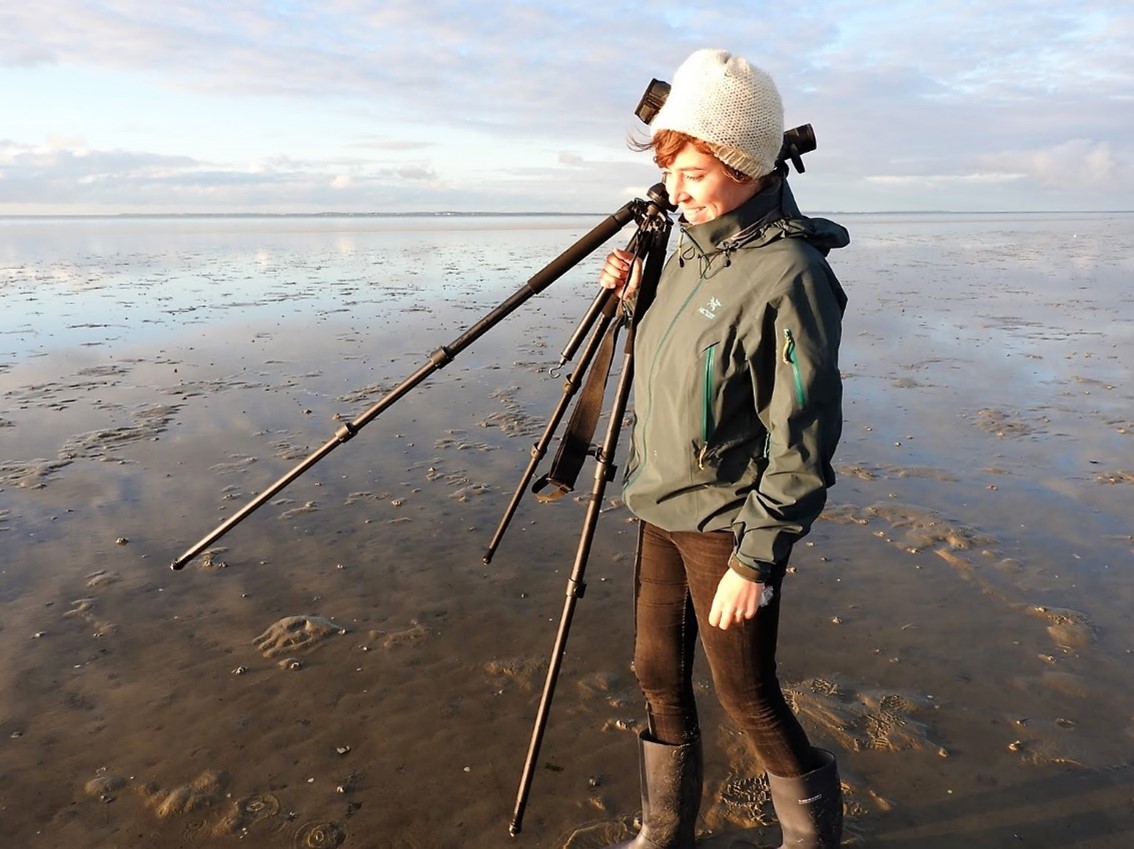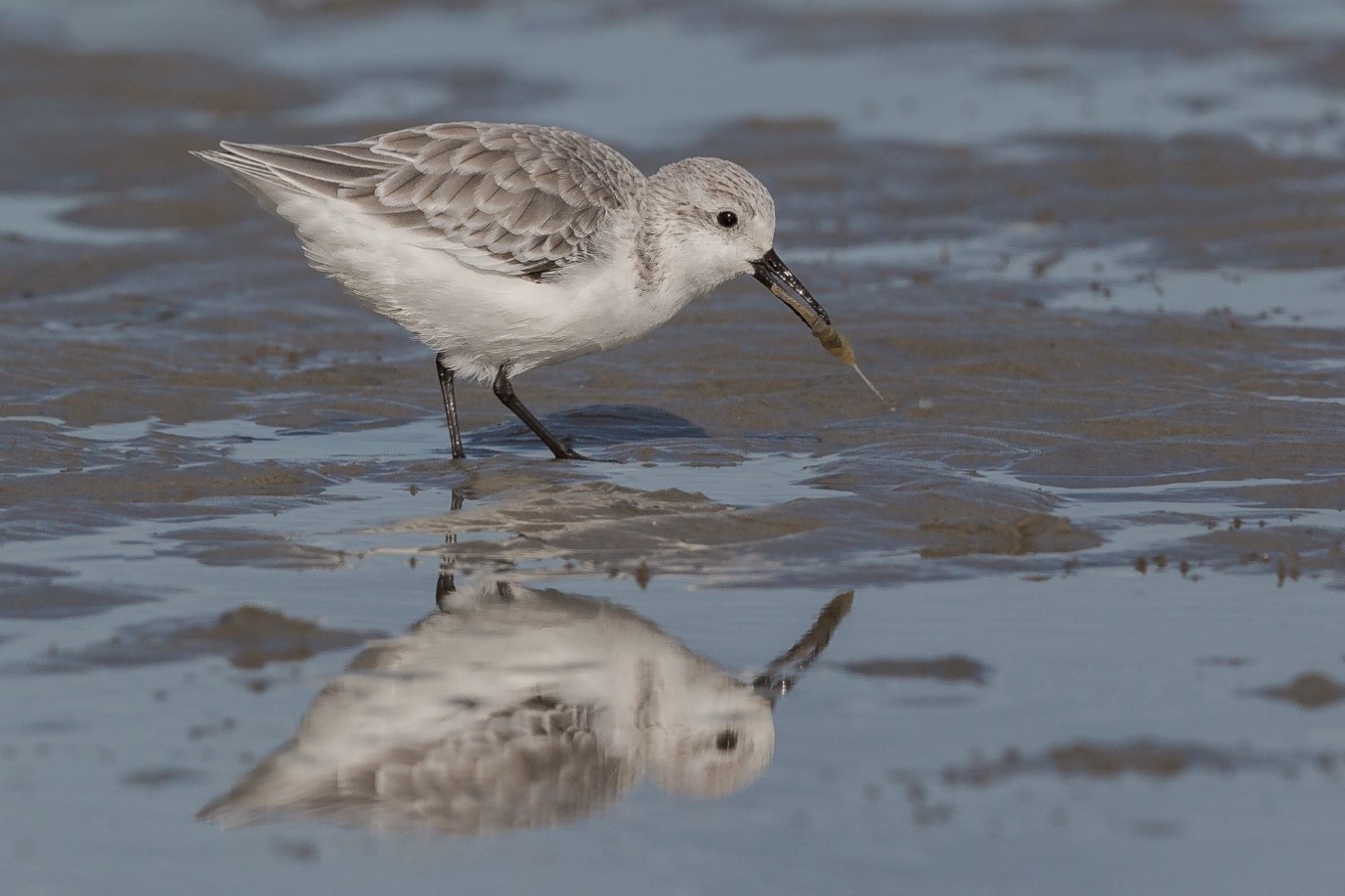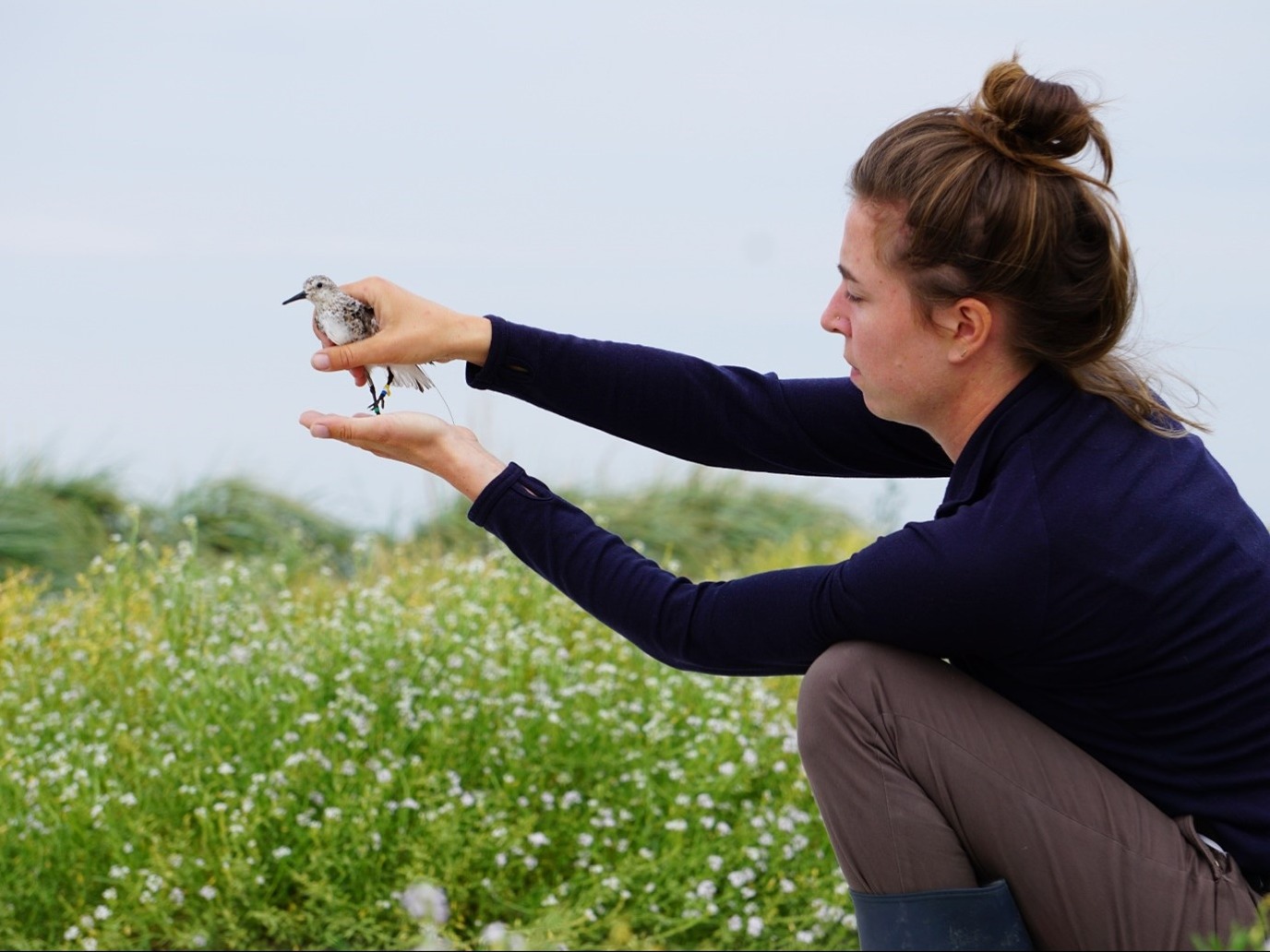Succesvolle drieteenstrandlopers gaan voor garnaal

Tegen de trend van veel vogels in, doet de drieteenstrandloper het al jaren relatief goed in de Waddenzee. De sleutel tot dat succes zit in de timing van het belangrijkste voedsel van deze vogeltjes: de garnalen op het wad. Dat is één van de conclusies uit het proefschrift van Emma Penning, waar zij 28 november op hoopt te promoveren. ‘Door het veranderende klimaat komen de garnalen tegenwoordig net iets vroeger en ook in hogere aantallen naar de ondiepe delen van de Waddenzee en daar profiteren doortrekkende drieteenstrandlopers van’, zag Penning.
Ruim tien jaar terug ontdekten vogelonderzoekers op het onbewoonde Waddeneilandje Griend min of meer bij toeval dat daar drieteentjes uit alle windstreken samenkomen vertelt Penning, die verbonden is aan het NIOZ (Koninklijk Nederlands Instituut voor Onderzoek der Zee) en de RUG. ‘De gekleurde ringen aan de pootjes van de vogels, die op afstand met de telescoop af te lezen zijn, lieten zien dat hier drieteentjes uit Afrika, Zuid-Europa, Engeland, IJsland en Oost-Europa samenkomen. Dat doen ze voordat ze naar de broedgebieden in onder andere Groenland vertrekken, of nadat ze ervan teruggekeerd zijn. Maar waaróm ze hier zo graag kwamen, dat wisten we toen nog niet.’

Dna in poepjes
Voor haar promotieonderzoek keek Penning letterlijk duizenden uren door de telescoop naar de etende strandlopers. ‘Dan zie je wel veel, maar niet alles. De vogels pikken razendsnel kleine prooien uit het zand, die je dan lang niet altijd op naam kan brengen. Maar we zagen vaak ook heel duidelijk dat ze achter springende garnaaltjes aan renden. Pas toen we naar het DNA in de poepjes van de vogels gingen kijken, zagen we hoe belangrijk die garnaaltjes eigenlijk zijn. In het najaar maken garnalen wel twee derde van het dieet van de drieteenstrandlopers uit.’
Drieteenstrandlopers kunnen veel prooien pakken; van wormpjes en kleine wadslakjes, tot aangespoelde schelpdieren en kleine krabbetjes. ‘Maar als ze de kans krijgen, gaan ze toch echt voor garnaal’, zag Penning. ‘Ook als de garnalen langzaam in aantal afnemen aan het eind van de zomer, zien we dat ze nog steeds de hoofdmoot van het drieteendieet vormen. Pas eind september, wanneer de garnalen naar de diepere delen van de Waddenzee en de Noordzee zijn verhuisd, schakelen de vogels over op ander voedsel. Dat is ook vaak het moment dat de vogels ineens op de stranden van de Noordzee opduiken.’

Uitgestrekte wadplaten
Vooral de wadplaten rond Griend zijn goed habitat voor garnalenliefhebbers, zo blijkt uit de tellingen van Penning en collega’s. ‘De hele populatie van de drieteenstrandlopers aan de oostkust van de Atlantische Oceaan bestaat naar schatting uit 250 tot 300 duizend vogels. Tijdens de piek in het vroege voorjaar kunnen er op één moment wel 20 duizend vogels rond Griend zitten. Door het jaar heen komt waarschijnlijk wel een kwart van de populatie op enig moment even buurten in de Waddenzee. Voor de precieze aantallen moeten we nog nauwkeuriger naar de ringwaarnemingen kijken.’
Penning vermoedt dat Griend zo geschikt is vanwege de rust en de uitgestrekte wadplaten rond het eiland. ‘Door het opwarmende klimaat zien we bovendien dat de garnaaltjes hier in het voorjaar tegenwoordig een week of twee eerder opduiken. Toevallig sluit dat goed aan bij het reisschema van de drietenen. Dat verklaart waarschijnlijk waarom dit de enige populatie is van de drieteenstrandlopers op de hele wereld die in de lift zit. Soortgenoten langs de kusten van Amerika, Azië of Australië doen het lang niet zo goed.’

Seizoensritme
Dat de drieteenstrandloper profiteert van het veranderende klimaat is meer geluk dan wijsheid, denkt Penning. ‘We kunnen niet zeggen of de vogels zich gericht hebben aangepast aan de verandering. De veranderende timing van de garnalen sluit wel goed aan bij het huidige seizoensritme van de vogels. Mijn onderzoek laat dan ook vooral zien dat je naar een hele voedselketen moet kijken, wil je veranderingen in aantallen vogels begrijpen. Als het de komende decennia nóg warmer wordt, is het nog maar de vraag hoe de natuur in de Waddenzee daarop reageert.’
Meer nieuws
-
19 december 2025
Mariano Méndez ontvangt Argentijnse RAÍCES-prijs
-
18 december 2025
Waarom innoveren, en voor wie?
-
17 december 2025
Ben Feringa wint Feynmanprijs

